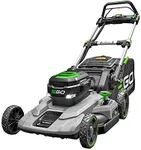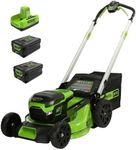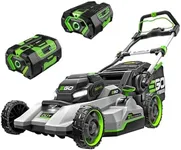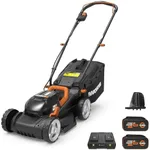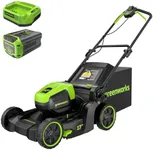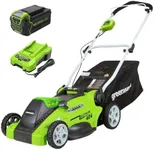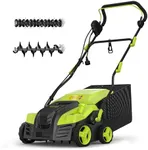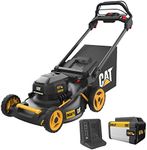Buying Guide for the Best Battery Lawn Mowers
Choosing the right battery lawn mower can make your lawn care routine much easier and more efficient. Battery lawn mowers are known for their convenience, low maintenance, and eco-friendliness. When selecting a battery lawn mower, it's important to consider several key specifications to ensure you pick the best fit for your needs. Here are the key specs you should focus on and how to navigate them.Battery VoltageBattery voltage indicates the power output of the lawn mower. Higher voltage typically means more power, which can be useful for cutting through thicker or taller grass. Battery voltages for lawn mowers usually range from 20V to 80V. For small to medium-sized lawns with regular grass, a lower voltage (20V-40V) may be sufficient. For larger lawns or tougher grass, consider a higher voltage (60V-80V) to ensure efficient cutting.
Battery Capacity (Ah)Battery capacity, measured in ampere-hours (Ah), determines how long the mower can run on a single charge. A higher Ah rating means longer runtime. Battery capacities typically range from 2Ah to 10Ah. For smaller lawns, a lower capacity (2Ah-4Ah) may be adequate, while larger lawns may require a higher capacity (5Ah-10Ah) to avoid frequent recharging. Consider the size of your lawn and how long you typically spend mowing to choose the right capacity.
Cutting WidthCutting width refers to the width of the mower's cutting deck and determines how wide a path the mower can cut in a single pass. Common cutting widths range from 14 inches to 21 inches. A wider cutting width (18-21 inches) can reduce mowing time for larger lawns, while a narrower width (14-17 inches) may be more maneuverable and suitable for smaller lawns or areas with tight spaces.
Cutting Height AdjustmentCutting height adjustment allows you to change the height at which the mower cuts the grass. This feature is important for maintaining a healthy lawn, as different grass types and seasons may require different cutting heights. Look for mowers with multiple height settings (usually 1-4 inches) to give you flexibility in lawn care. Consider the types of grass you have and the desired lawn appearance when choosing a mower with appropriate height adjustments.
Runtime and Charging TimeRuntime indicates how long the mower can operate on a fully charged battery, while charging time is how long it takes to recharge the battery. Longer runtime and shorter charging time are desirable for efficiency. Runtime can vary from 30 minutes to over an hour, and charging times can range from 30 minutes to several hours. For larger lawns, look for mowers with longer runtimes and faster charging times to minimize downtime. For smaller lawns, shorter runtimes and longer charging times may be acceptable.
Weight and ManeuverabilityThe weight of the lawn mower affects how easy it is to push and maneuver. Lighter mowers are generally easier to handle, especially on uneven terrain or in tight spaces. Battery lawn mowers typically weigh between 30 to 60 pounds. If you have a smaller lawn or need to navigate around obstacles, a lighter mower may be preferable. For larger, open lawns, weight may be less of a concern.
Noise LevelBattery lawn mowers are generally quieter than gas-powered mowers, but noise levels can still vary. Lower noise levels are beneficial for reducing disturbance to neighbors and for a more pleasant mowing experience. Noise levels are usually measured in decibels (dB). If noise is a concern, look for mowers with lower dB ratings. Consider your neighborhood and personal preference for noise when selecting a mower.
